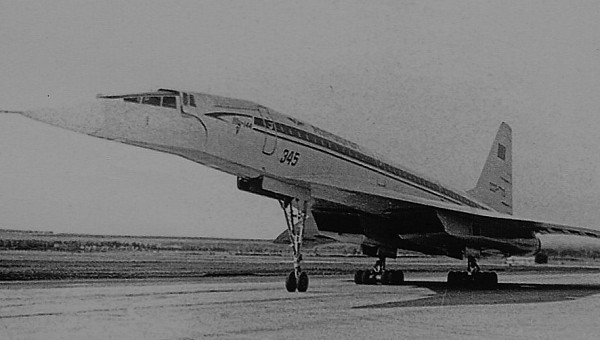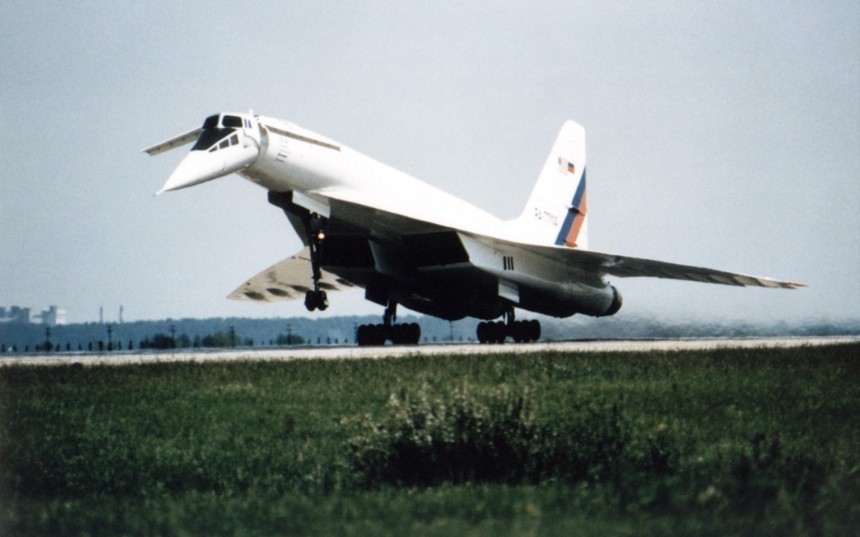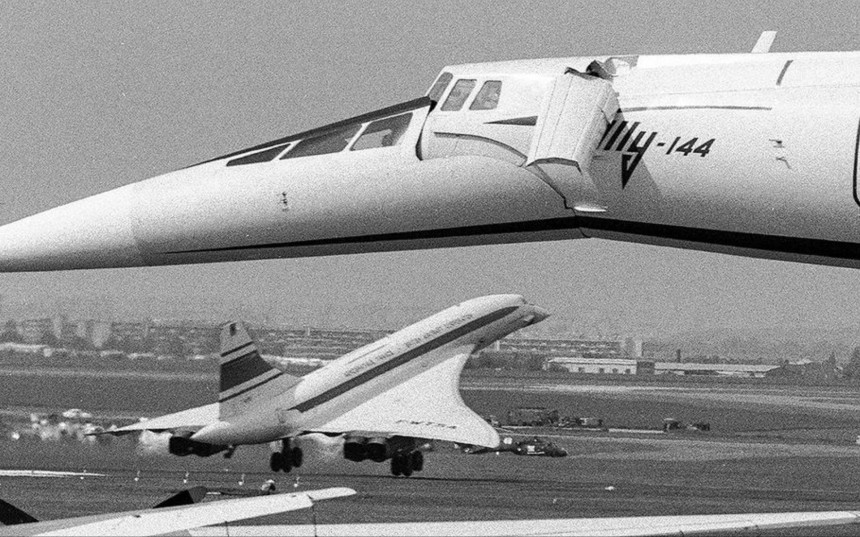To many, when they think of supersonic airliners, they instantly think of Concorde. The joint Anglo-French aircraft that served for nearly 30 years, ferrying people across the Atlantic at Mach 2. However, the first supersonic airliner wasn’t Concorde. In fact, it was the Soviet Tupolev Tu-144. An aircraft dubbed “Konkordski” by the West as it looked so similar to the Concorde. However, this aircraft did beat its Western counterpart to the skies by just a few months.
It didn’t have a happy ending, though. The Tu-144 was a troubled aircraft. Marred by an accident at the 1973 Paris Air Show, and severe mechanical problems that kept many of these airliners grounded. In the end, the Tu-144 had a very short service life and was exposed as the political weapon it really was.
Kolesov RD-36-51 turbojets would power the main Tu-144D production version of the aircraft. The iconic droop snoot of Concorde was replicated, while its delta wing was somewhat different from what Concorde had. There was no conical camber, for example, on the prototype Tu-144, although production examples featured a double delta wing. The Tu-144 also had a lift problem, meaning two canards were added to the front of the aircraft above the cockpit. While the Soviet Union had got information on Concorde, it was clear the Western aircraft was far ahead when it came to the technology utilized.
Something that certainly did not help the Tu-144 was the 1973 accident during that year's Paris Air Show. While conducting a display, the Tu-144, CCCP-77102, entered a sharp dive. This was potentially to avoid a French Mirage jet that was taking photographs of the Tu-144. During the dive, the Tu-144 broke up towards the bottom as pilot Mikhail Kozlov attempted to recover the aircraft. The ensuing accident killed all six Soviet crew members and two people on the ground in the village of Goussainville where the wreckage ended up.
Soviet airline Aeroflot wasn’t so keen to operate the Tu-144 after this accident. Restrictions were placed on the jet, and it served for just one year as an airliner. It was withdrawn after another crash occurred in May 1978, while Concorde would serve for nearly 30 years with British Airways and Air France. The Tu-144 was proving itself to be incredibly unreliable even before the Paris crash, and the aircraft only ever flew one commercial route to Almaty, which is now in Kazakhstan. Unreliability was just one of the many issues that blighted the Tu-144 in service.
The crucial difference was that, while Concorde could cruise at Mach 2 with its reheat turned off, the Tu-144 could not. Which meant it was severely compromised when it came to what it could actually do at supersonic speeds and it would guzzle fuel at an alarming rate. Little wonder then the Tu-144 was a huge commercial failure.
Espionage helped the Tu-144 overtake the Concorde
It is no secret that espionage from the Soviet Union helped the Tu-144 get into the skies quicker than the Concorde. Soviet agents made off with documents relating to Concorde. One, Sergei Pavlov, was arrested in Paris with blueprints of Concorde’s landing gear and anti-lock brakes found among his belongings. Any information passed on to the Soviet Union would have helped Tupolev build the Tu-144 and get it flying before Concorde, which was all the Soviets really cared about. As such, the Tu-144 was rushed, and development was only half-finished by the time it was taking to the skies.Kolesov RD-36-51 turbojets would power the main Tu-144D production version of the aircraft. The iconic droop snoot of Concorde was replicated, while its delta wing was somewhat different from what Concorde had. There was no conical camber, for example, on the prototype Tu-144, although production examples featured a double delta wing. The Tu-144 also had a lift problem, meaning two canards were added to the front of the aircraft above the cockpit. While the Soviet Union had got information on Concorde, it was clear the Western aircraft was far ahead when it came to the technology utilized.
The 1973 Paris Air Show crash ruined the Tu-144's reputation
Soviet airline Aeroflot wasn’t so keen to operate the Tu-144 after this accident. Restrictions were placed on the jet, and it served for just one year as an airliner. It was withdrawn after another crash occurred in May 1978, while Concorde would serve for nearly 30 years with British Airways and Air France. The Tu-144 was proving itself to be incredibly unreliable even before the Paris crash, and the aircraft only ever flew one commercial route to Almaty, which is now in Kazakhstan. Unreliability was just one of the many issues that blighted the Tu-144 in service.














